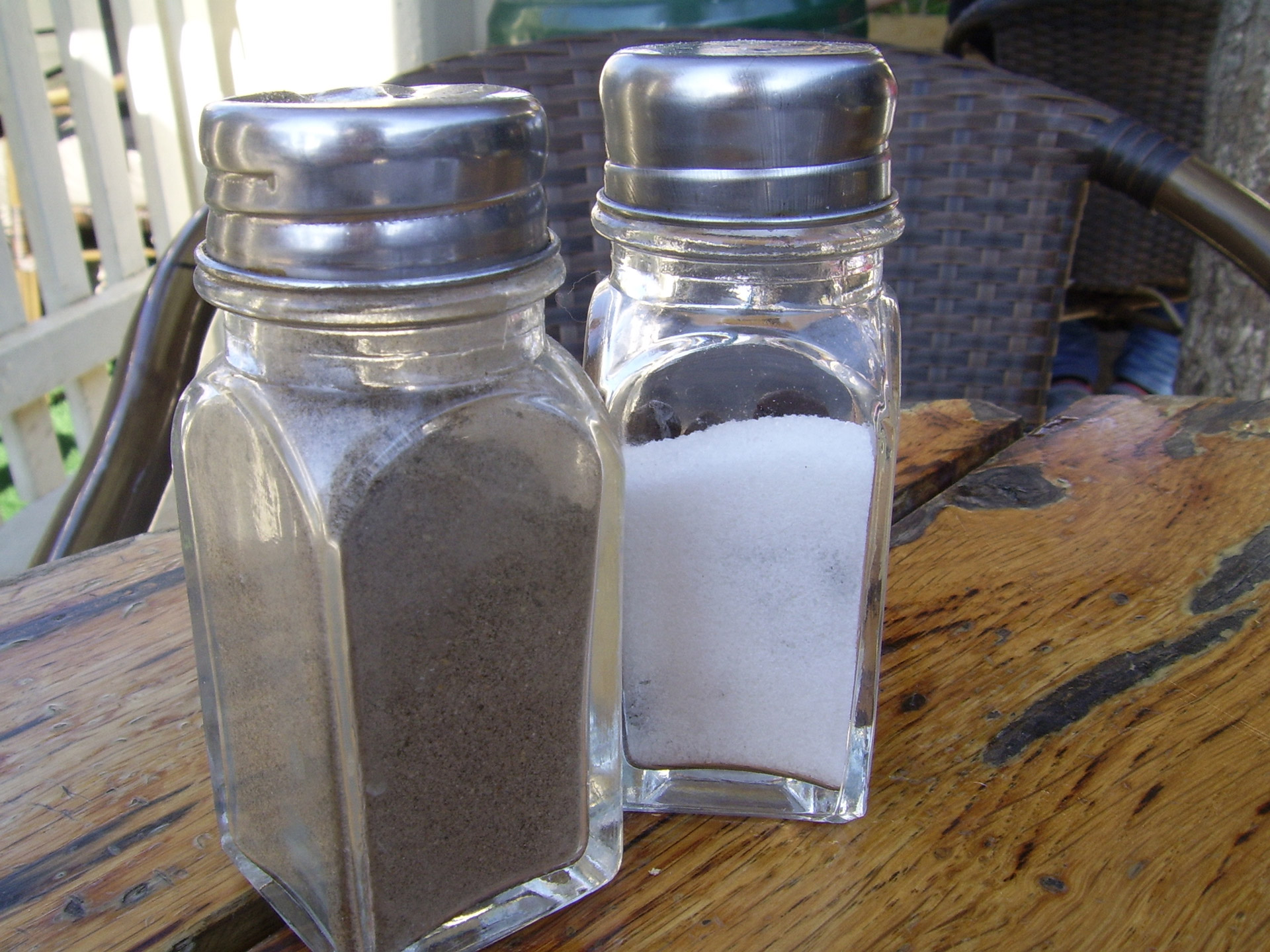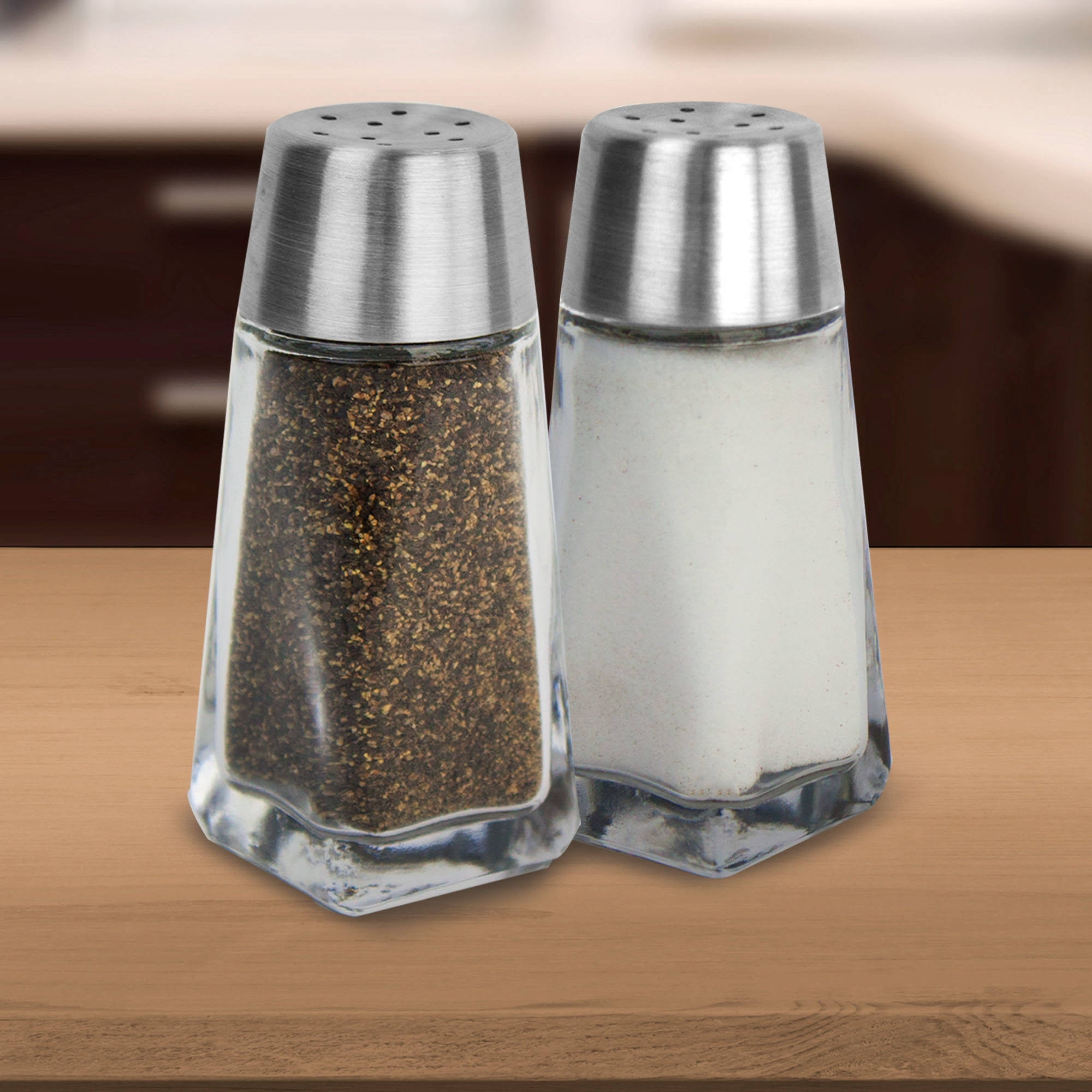Salt And Pepper: The Dynamic Duo That Elevates Every Dish
There’s something magical about salt and pepper. These two pantry staples have been together for centuries, like an old married couple that just gets better with time. You might not notice them at first glance, but take them away from your meal, and suddenly everything feels… off. Salt and pepper are more than just seasonings; they’re the unsung heroes of the culinary world, quietly enhancing flavors and making our meals unforgettable. If you’re ready to dive deep into the history, science, and art of this dynamic duo, then buckle up because we’re about to spice things up!
Now, you might be wondering why salt and pepper deserve their own article. Well, it’s simple: they’re everywhere. From high-end restaurants to humble kitchens, these two spices are indispensable. But have you ever stopped to think about why they’re so special? Or how they complement each other so perfectly? This isn’t just about sprinkling them on your food—it’s about understanding the chemistry behind what makes them so darn good.
Let’s get one thing straight: salt and pepper aren’t just for show. They’re essential tools in every cook’s arsenal, capable of transforming bland dishes into flavor explosions. Whether you’re a seasoned chef or someone who just knows how to boil water, mastering the art of using salt and pepper can take your cooking to the next level. So, let’s break it down and uncover the secrets of this legendary pair.
- Itslunarliv Leaks See The Nude Videos Onlyfans Content
- Mehdi Hasans Wife Career Family Personal Life Revealed
A Brief History of Salt and Pepper
Before we dive into the nitty-gritty of how to use salt and pepper, let’s take a quick trip back in time. Salt has been around since, well, forever. It was one of the first commodities traded by humans, and it even gave rise to the word "salary" because Roman soldiers were paid in salt. Crazy, right? Meanwhile, pepper, the king of spices, was so valuable during ancient times that it was used as currency. People literally paid their bills with peppercorns!
How Salt Became a Staple
Salt’s journey from ancient trade routes to modern-day kitchens is nothing short of remarkable. Back in the day, salt wasn’t just used for seasoning—it was also a preservative. Before refrigeration, people relied on salt to keep food from spoiling. That’s why it was so highly prized. And as civilizations grew, so did the demand for salt. Today, it’s one of the most common ingredients in the world, but its history is anything but ordinary.
Pepper: The Spice That Conquered the World
While salt was busy preserving food, pepper was making waves across the globe. Originating in India, black pepper quickly became a hot commodity (pun intended). Traders traveled thousands of miles to bring this precious spice to Europe, where it became a symbol of wealth and status. Even today, pepper holds a special place in our hearts—and our recipes. It adds depth, complexity, and a little kick to any dish.
- Kannada Movies Online Find Watch The Best Year Releases Now
- Latest Telugu Movie News Streaming Guide Year Find It Here
Why Salt and Pepper Work So Well Together
So, what makes salt and pepper such a perfect match? It’s all about balance. Salt enhances flavors by bringing out the natural taste of ingredients, while pepper adds a touch of heat and aroma. Together, they create a harmonious blend that elevates every dish. Think of them as the yin and yang of the kitchen—opposites that complement each other beautifully.
Here’s a fun fact: salt actually enhances your perception of other flavors. When you add a pinch of salt to something sweet, like chocolate or caramel, it makes the sweetness pop even more. And pepper? Well, it adds a layer of complexity that keeps your taste buds guessing. It’s no wonder chefs swear by this combination.
The Science Behind Salt and Pepper
Now, let’s get scientific for a moment. Salt, or sodium chloride, is an ionic compound that interacts with your taste receptors to enhance flavors. It doesn’t just make things taste salty—it amplifies the umami, sweetness, and even bitterness in your food. Pepper, on the other hand, contains a compound called piperine, which gives it its signature heat. This heat stimulates your senses and adds a layer of depth to your meals.
How Salt Affects Flavor
Salt is a flavor enhancer extraordinaire. It works by suppressing bitterness and enhancing sweetness and umami. This is why a pinch of salt can make a bowl of soup taste richer or a piece of chocolate taste sweeter. But be careful—too much salt can overpower other flavors, so it’s all about finding the right balance.
The Role of Pepper in Cooking
Pepper brings a unique dimension to your dishes. Its heat comes from piperine, which activates certain receptors in your mouth and nose. This creates a tingling sensation that adds excitement to your meals. Plus, pepper has antimicrobial properties, which means it can help preserve food—kind of like salt’s ancient cousin!
Types of Salt and Pepper
Not all salts and peppers are created equal. There’s a whole world of options out there, each with its own unique characteristics. Let’s explore some of the most popular varieties:
- Kosher Salt: Large, flaky crystals that are perfect for seasoning meats and vegetables.
- Himalayan Pink Salt: Known for its beautiful pink hue and mineral-rich composition, this salt adds a subtle sweetness to dishes.
- Sea Salt: Harvested from evaporated seawater, sea salt has a briny, complex flavor that’s ideal for finishing dishes.
- Black Pepper: The most common type of pepper, black pepper has a bold, earthy flavor that works well in both savory and sweet recipes.
- White Pepper: Made from fully ripened peppercorns, white pepper has a milder, more delicate flavor that’s great for light-colored dishes.
Choosing the Right Salt and Pepper for Your Recipe
When it comes to selecting salt and pepper, it’s all about the dish you’re making. For example, if you’re roasting vegetables, kosher salt is a great choice because its large crystals adhere well to food. On the other hand, if you’re making a delicate sauce, fine sea salt might be a better option. Similarly, black pepper works wonders in hearty stews, while white pepper shines in creamy soups.
Mastering the Art of Seasoning
Seasoning with salt and pepper is both a science and an art. It takes practice to get it just right, but once you do, your cooking will never be the same. Here are a few tips to help you become a seasoning master:
- Always taste as you go. This will help you determine how much salt and pepper to add.
- Use your fingers to sprinkle salt and pepper over food. This gives you more control and ensures even distribution.
- Don’t be afraid to experiment. Try different types of salt and pepper to see which ones you like best.
Common Mistakes to Avoid
Even the best cooks make mistakes when it comes to seasoning. Here are a few to watch out for:
- Over-salting: Too much salt can ruin a dish, so start with a small amount and adjust as needed.
- Under-seasoning: Don’t be shy with your pepper! A little heat can go a long way in adding depth to your meals.
- Adding salt too early: Salt can draw moisture out of vegetables, so it’s best to add it towards the end of cooking.
Health Benefits of Salt and Pepper
Believe it or not, salt and pepper offer more than just great taste—they also come with some health benefits. Salt helps regulate fluid balance in your body and supports nerve and muscle function. Just be sure to consume it in moderation, as excessive salt intake can lead to health issues. As for pepper, it’s rich in antioxidants and has anti-inflammatory properties. Plus, it can aid digestion and boost metabolism. Who knew seasoning could be so good for you?
How Much Salt and Pepper Should You Use?
While salt and pepper are healthy in moderation, it’s important to use them wisely. The American Heart Association recommends no more than 2,300 milligrams of sodium per day, with an ideal limit of 1,500 milligrams for most adults. As for pepper, there’s no specific guideline, but a few grinds should do the trick. Remember, a little goes a long way!
Recipes Featuring Salt and Pepper
Ready to put your newfound knowledge to the test? Here are a couple of recipes that showcase the power of salt and pepper:
Simple Salt and Pepper Shrimp
Ingredients:
- 1 pound large shrimp, peeled and deveined
- 2 tablespoons olive oil
- 1 teaspoon kosher salt
- 1 teaspoon freshly ground black pepper
- Juice of 1 lime
Instructions:
- Preheat your oven to 400°F (200°C).
- In a bowl, toss the shrimp with olive oil, salt, and pepper until evenly coated.
- Spread the shrimp in a single layer on a baking sheet and roast for 8-10 minutes, or until pink and opaque.
- Squeeze lime juice over the shrimp and serve immediately.
Salt and Pepper Chicken Wings
Ingredients:
- 2 pounds chicken wings, drumettes, and flats
- 1 tablespoon kosher salt
- 1 tablespoon freshly ground black pepper
- 2 tablespoons vegetable oil
Instructions:
- Preheat your oven to 425°F (220°C).
- Toss the chicken wings with salt, pepper, and oil in a large bowl.
- Arrange the wings on a baking sheet lined with parchment paper and bake for 35-40 minutes, flipping halfway through, until crispy and golden brown.
- Serve with your favorite dipping sauce.
Conclusion: Spice Up Your Life
And there you have it—the ultimate guide to salt and pepper. These two humble seasonings may seem simple, but they pack a powerful punch when used correctly. Whether you’re a seasoned chef or a beginner cook, mastering the art of seasoning with salt and pepper can take your meals to the next level. So, don’t be afraid to experiment, taste as you go, and most importantly, have fun in the kitchen!
Now, it’s your turn. Tell us in the comments below: what’s your favorite way to use salt and pepper? And don’t forget to share this article with your friends and family. Who knows? You might just inspire someone to become a seasoning master too!
Table of Contents
A Brief History of Salt and Pepper
Why Salt and Pepper Work So Well Together
The Science Behind Salt and Pepper
Mastering the Art of Seasoning
Health Benefits of Salt and Pepper
Recipes Featuring Salt and Pepper



Detail Author:
- Name : Faye Tillman
- Username : ugulgowski
- Email : kjones@gmail.com
- Birthdate : 2003-05-06
- Address : 52593 Gutkowski Islands Suite 805 North Casper, IL 14094
- Phone : 934.329.6471
- Company : Blick-Beahan
- Job : Online Marketing Analyst
- Bio : Quis voluptatem occaecati voluptas et eaque est. Ipsa ipsam laborum itaque fugiat. Enim atque numquam in voluptatem voluptas corporis amet deserunt.
Socials
tiktok:
- url : https://tiktok.com/@porter.zieme
- username : porter.zieme
- bio : Blanditiis sapiente quisquam a minus. Numquam voluptatibus ipsa sed.
- followers : 1802
- following : 2289
linkedin:
- url : https://linkedin.com/in/ziemep
- username : ziemep
- bio : Eaque incidunt temporibus nisi nihil numquam eos.
- followers : 1010
- following : 1142
twitter:
- url : https://twitter.com/porter.zieme
- username : porter.zieme
- bio : Eum sit et aut. Distinctio velit nihil voluptate tempore qui dolorum quia. Sit veritatis error aperiam quidem. Eaque quasi quasi nihil et.
- followers : 6418
- following : 2301